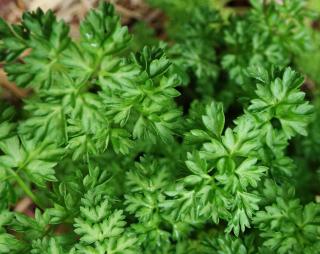

Chervil is a very fragrant spice that offers many health benefits and significant therapeutic value.
Native to Southern Russia, chervil, a herbaceous plant belonging to the Apiaceae family, is designated under a great many names: “garden chervil“, “common chervil“, “French parsley” and its scientific name is “Anthriscus cerefolium“.
Chervil was introduced to Northern Europe by the Romans, and then spread to all of Europe where it is appreciated in cooking as a spice, mostly because of the light aniseed taste of its leaves.
This plant can easily reach 24 inches (60 cm), but its average height is 16 inches (40 cm). Chervil presents delicately chiseled leaves and tiny white flowers. It blooms from June to September and is best harvested in spring and summer.
Long was it used in the Middle Ages to stimulate lazy stomachs and to help birthing pain to fade away for mothers, and chervil also has other properties according to therapists. Which are these benefits? What is the impact of chervil on the human body? How should it be used? Are there any contraindications? The following lines will draft an answer…
There are numerous medicinal properties attributed to chervil. To avail of them, it is recommended to not only use the leaves, but also the stems and roots. Used in cooking, it has diuretic and purgative effects on the body.
To take advantage of the health benefits of this herb that is rich in vitamin C, provitamin A and vitamin B9, trace elements and minerals, chervil can be used in the form of decoctions, infusions, poultices, and fresh juice.
Thus, a chervil infusion helps digestion, treats urine retention, and soothes gout, kidney stone and bronchitis.
Poultices are made from decoctions of the little flowers. They are lain on the part of the body to soothe, and chervil alleviates breast engorgement for breast-feeding mothers and kidney congestion. Chervil poultices also act upon rheumatism and calms it.
In topical use on the skin, it is a relaxing agent and a powerful decongestant. It relieves insect bites and contusions.
Its antiseptic properties are appreciable when treating wounds because fresh chervil sap closes the wounds quickly. Chervil also can rid you of certain dermatitis and skin rashes.

Eating it raw (snipped to season mixed salads, soup, fish, shellfish, meat and omelets) is the best option. Never boil it or it will lose all its taste.
Careful because ingesting chervil in whichever form is contraindicated for breast-feeding women.